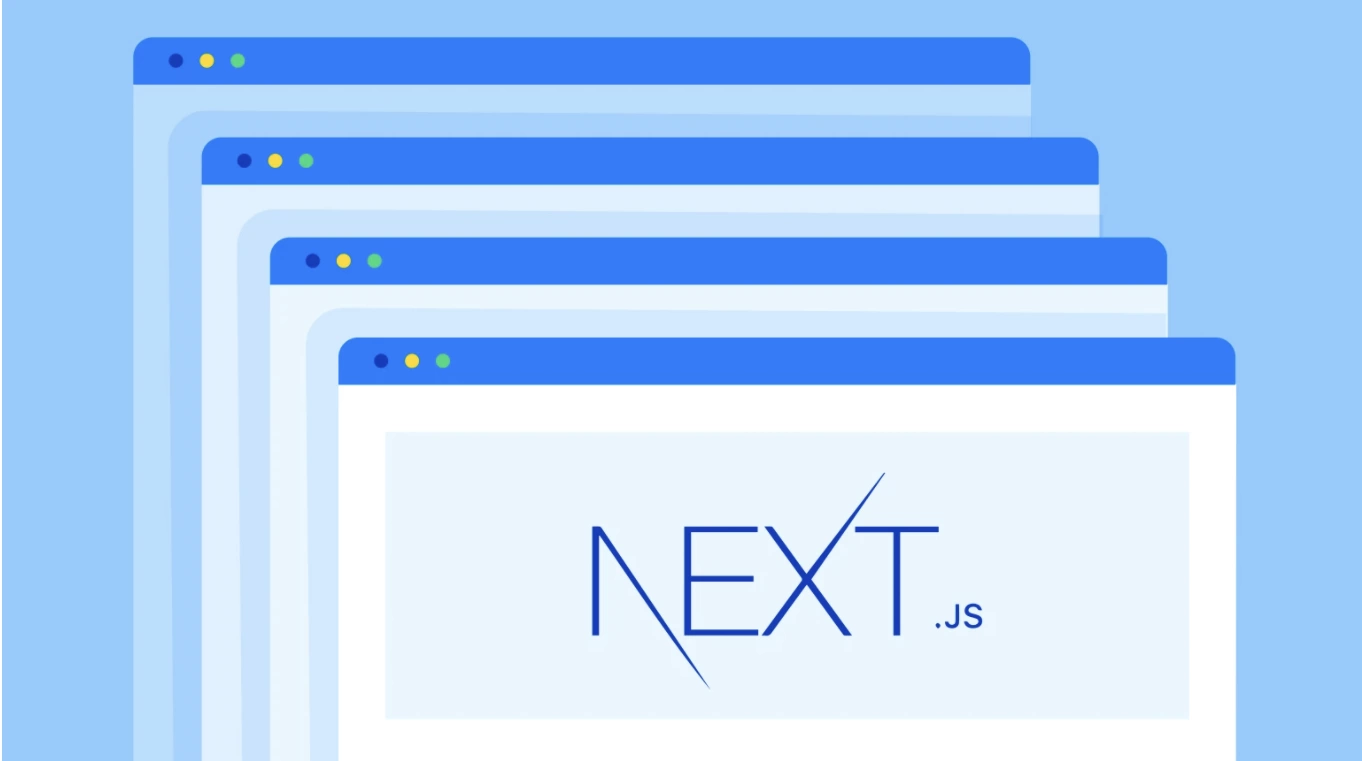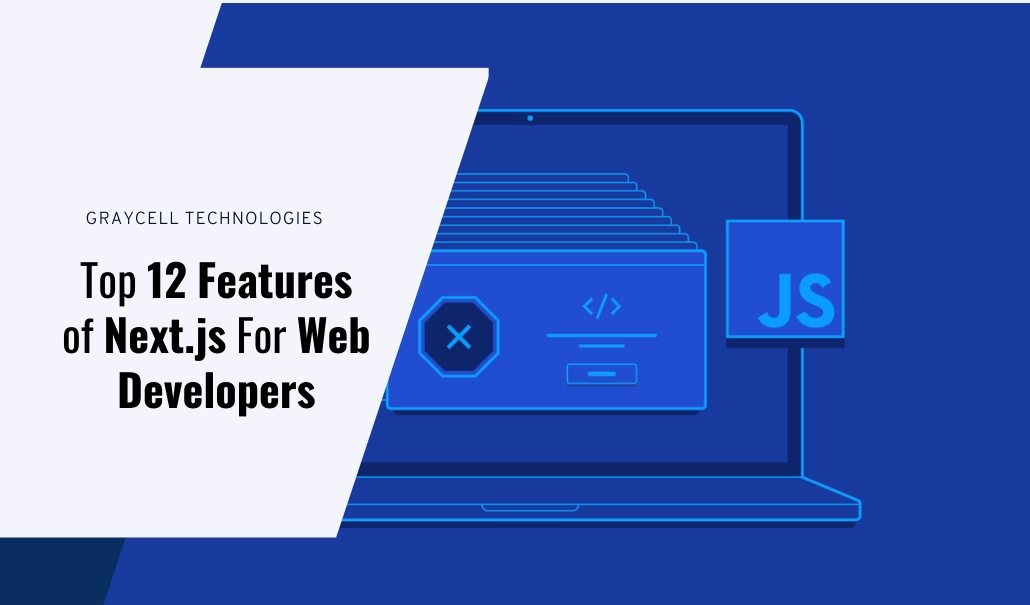Next.js is an open-source React framework, mainly adopted for its remarkable support for server-side rendering (SSR) in react applications. Next.js provides a lot of brilliant tools with advanced features that will take your web application to the next level. Traditional React applications render all their data in the browser from the client-side, whereas Next.js is used to extend these features to include web applications rendered on the server-side.
The more we interact digitally, the more impatient we become. Every developer and client expects to load their website and app within milliseconds. So to decrease the time and increase the efficiency, JavaScript came up with the Next.js framework. There are numerous benefits of the Next.js framework like helping you to produce data-intensive, highly scalable code, and real-time back-end services to power the websites.
What is Next.js

Next.js is a JavaScript framework based on react.js. Next.js allows you to build static web applications and server-side rendering using React. Besides speed, another best feature of Next.js is that you don’t need any configuration of web pack to start using Next.js. It comes with its configurations. No doubt, Next.js is a great framework to build complex websites quickly, which makes Next.js developers the first option for creating complex web applications.
Top Features of Next.js for Web Developers
- Next.js Commerce Solutions
Next.js offers an all-in-one starter pack for E-Commerce web applications. It helps you to jump-start the development process with its inbuilt features and base structure of E-Commerce. If you are building an E-Commerce web application with Next.js features like analytics, internationalization routing, and image optimization, you can build your application easily and quickly.
- Built-in CSS
Next.js enables you to access CSS files from a JavaScript file. This is possible because Next.js extends its features of import function. Next.js utilizes styled-jsx for CSS by default, so all styles between <style jsx></style> tags are separated for a particular page. Styles are being produced on both server and client-side, so just after entering a site, we can see an approved design.
- Image Optimization and Image Component
The Next.js image component is an extension of the HTML image tag<img>. Next.js image component style includes a variety of built-in performance optimizations to help you achieve your goal. Image optimization means creating, developing, and resizing photos in current working configurations like WebP. Image Optimization works with any format of the picture with any image source.
- Automatic Font Optimisation
In Next.js, the CSS of fonts are naturally inclined at build time. It eliminates the round trip of fetching font declarations. This results in improving the FCP and LCP by almost five seconds. Next.js supports both Adobe kit and Google fonts. By default, it uses a pre-connect tag that establishes a secure faster connection with the font files.
- Automatic Code Splitting
Automatic code splitting is a code optimization technique that reduces the size of an application by breaking the code into smaller sections and serving them only when needed. This guarantees your first-page load to be as fast as possible and the rest of the page loads will send the JavaScript expected to its client.
- Fast Refresh
Fast refresh is now offered by default for all the projects on the 9.4 version of Next.js or newer. Fast refresh gives developers an immediate suggestion on edits made to your React components. With the help of the Next.js fast refresh feature, most of the edits are visible within a second. The best part is, all this happens without losing the component state.
- Next.js Analytics
Next.js analytics gets you a deeper understanding of your projects. It is a feature that offers you to analyze data for your projects in one place. We all know performance is the major aspect of the usability of web applications. These aspects can be compared and measured using different types of parameters. The latest release of Next.js allows real-time tracking that tracks your web applications’ health, loading speed, visual stability, and responsiveness.
- Lazy Loading
The lazy loading feature of Next.js helps you to deliver a better client experience. The client might reject your application if your loading requires over 25 seconds. The lazy loading feature of Next.js permits you to control and manage the speed of the loading, so you just load the main part of the code on your page.
- Server Side Rendering (SSR)
When a user requests a webpage to visit, the server prepares the page by fetching user input value and then the server sends it back to the user through the web browser. This entire process of taking the data from the user, then fetching data from the database and creating an HTML page according to the input value, and serving it to the user is known as server-side rendering (SSR). But Next.js creates the HTML page at build time and serves the pre-rendered page from server to browser with less JavaScript code. When the page is loaded by the browser, it’s the job of JavaScript to make the page fully interactive.
- Layouts
In Next.js layouts features, layout refers to the management of graphics, text, and data of the web application. As a developer, it is good to split your large files into smaller segments by defining your layout. A considerable lot of these segments are reused between pages.
- Data Fetching
Next.js offers various ways for data fetching to pre-render. There are two types of pre-rendering: the first one is Static Generation and the second one is Server-side Rendering. In a static generation, the HTML is created at build time and will be reused on each and every single request. Whereas in server-side rendering, The HTML is produced on each request. Initially, Next.js offers you to pick your desired pre-rendering structure you’d prefer to use for each page.
- Supported Browsers and Features
Next.js supports almost every web browser because they know browser compatibility is a headache for any developer. It is very flexible for supporting different kinds of web browsers like Firefox, Microsoft Edge, Opera, Google Chrome, etc. Next.js directly infuses polyfills, which are needed for IE11 compatibility. These polyfills are supposedly inclined off from the production build to avoid any delicacy.
Conclusion
Next.js is significantly good as a React framework. It has some exciting features like loading speed and real-time feedback, which surely improve the developer’s productivity. These features matter a lot in the case of decreasing development time and that makes Next.js as one of the most loved frameworks in the class of React.








